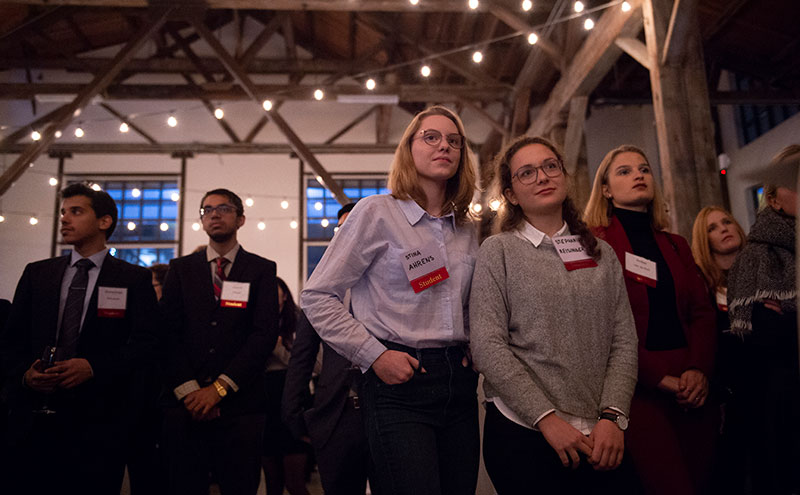Learn what work-integrated learning, or WIL, means at Capilano University.

Work-integrated learning (WIL) opportunities are practical learning opportunities where students can get experience that improves their prospects. It lets them put their knowledge into practice. WIL includes three components: faculty, students and external partners.
There are many ways you can add WIL to your course or program to benefit your students. This list showcases the different types of work-integrated learning you could add to your course or program and what they mean for your students.
Curricular opportunities
Students do research to help solve practical problems. This can include consulting, design or community-based research projects.
A clinic is practice-based work experience under supervision.
In CSL, students work with a community-based organization to solve local challenges.
Courses and programs with a co-op option include Outdoor Recreation Management and Tourism Management.
Co-ops are paid work terms that students complete during their program. Students can alternate co-ops and academic terms to keep developing their skills.
For example, in REC 260 - Outdoor Recreation Co-op Work Experience, students get full-time, productive, paid employment in the field of outdoor recreation. This is interspersed with classroom study.
An internship is a structured work experience opportunity. It can happen in the middle of a program or just before graduation. Internships can be of any length, but are typically four, eight or 12 months long. See business internship courses such as BADM 340 - Business Internship I and BADM 440 - Business Internship II.
Courses and programs with a field placement option include Kinesiology and Rehabilitation Assistant.
Field placements and field schools let students get hands-on experience in their relevant area. They are not essential components but beneficial components of a course or program.
For example: In RADP 190 - Practicum: Fieldwork I, Rehabilitation Assistant students get to experience potential career paths. They support occupational therapists, physiotherapists and speech-language pathologists in public or private practice.
Courses and programs with a practicum or clinical placement include Applied Behaviour Analysis (Autism), Arts and Entertainment Management, Design in Visual Communication, Early Childhood Care & Education, Education Assistant, Global Hospitality & Tourism Management, Health Care Assistant, Legal Studies, Motion Picture Arts, Music Therapy, Rehabilitation Assistant, Tourism Management International and more.
Practicums and clinical placements are forms of work experience done under supervision. A practicum is typically unpaid as students do not have their own workload/caseload.
For example: In EDUC 349 - Applied Theory Infant/Toddler Practicum, early childhood education students spend 25 days in an inclusive centre for children from birth to three years of age. In IDES 490 - Industry Practicum, design students get the opportunity to work within a studio/agency environment or with a personal mentor to develop their work readiness.
Work experience is similar to a co-op but on a smaller scale, with students sometimes completing their work experience in the middle of a term.
For example, in BADM 345 - Business Work Experience I, students take on a period of full-time, paid employment in industry, not-for-profit organizations or government. In BADM 445 - Business Work Experience II, students get a second period of full-time, paid employment in industry, not-for-profit organizations or government.
Co-curricular opportunities
Work experience where students support others. This could be as a peer helper or student ambassador, etc.
This is where a student is hired by a school to work on research projects with faculty or departments.
A post-credential internship happens after coursework and before graduation. Internships can be of any length, but are typically four, eight, or 12 months long.
Co-curricular CSL happens outside of class. It gives students the opportunity to help their communities and the chance to reflect.
Volunteering builds skills while helping businesses that may not be able to afford full-time employees. Learn more about opportunities to get involved on campus.
Work study is a way for students to strengthen their skills while earning money alongside their program. These positions are paid for with student financial aid.
Courses and programs with an externship option include Music Therapy.
Short-term work experience such as job shadowing. This gives students the chance to see how different companies operate and build their network.
For example, in MT 330 - Clinical Skills, students take field trips to clinical settings to observe music therapists working with the elderly.
Student jobs on campus including summer jobs, or work as library assistants, etc.
